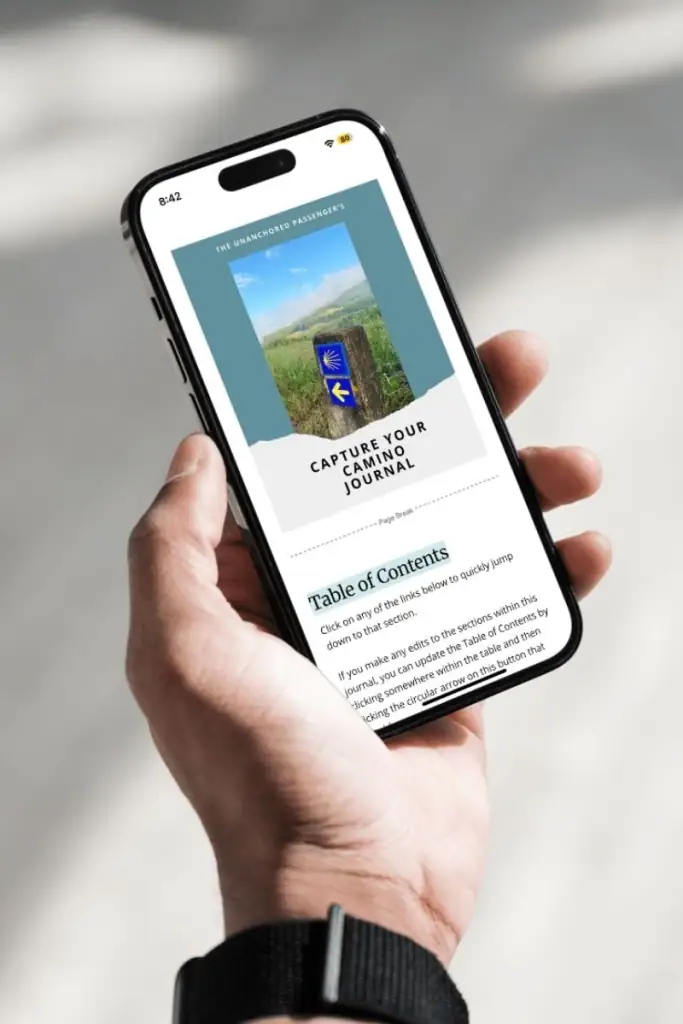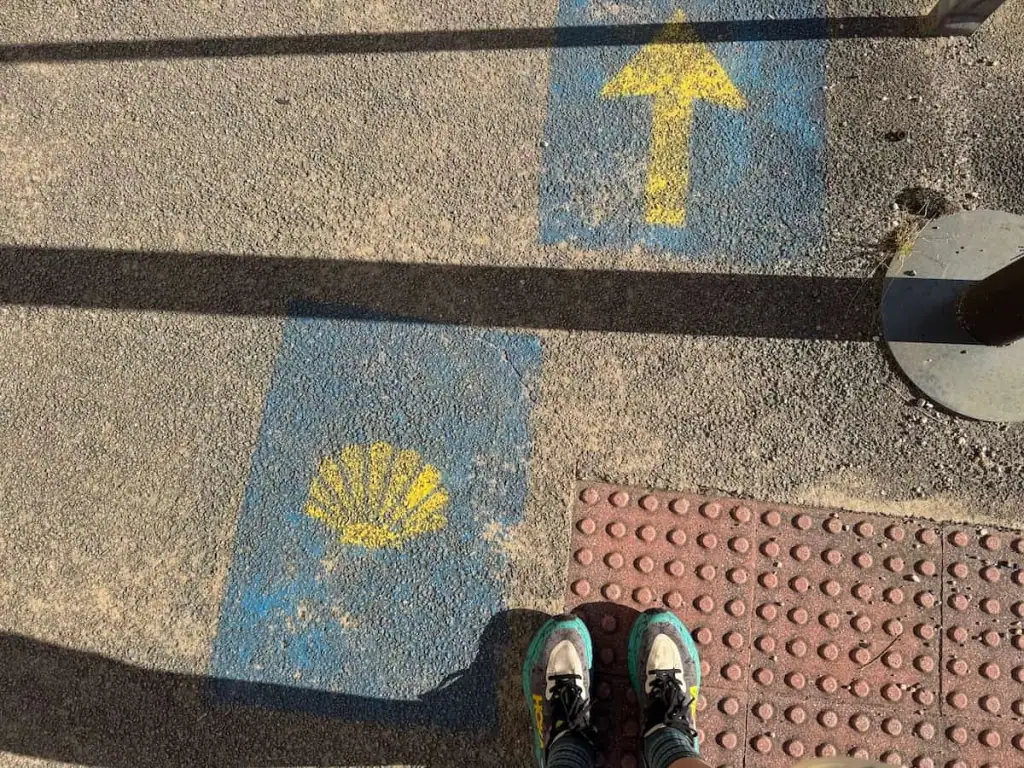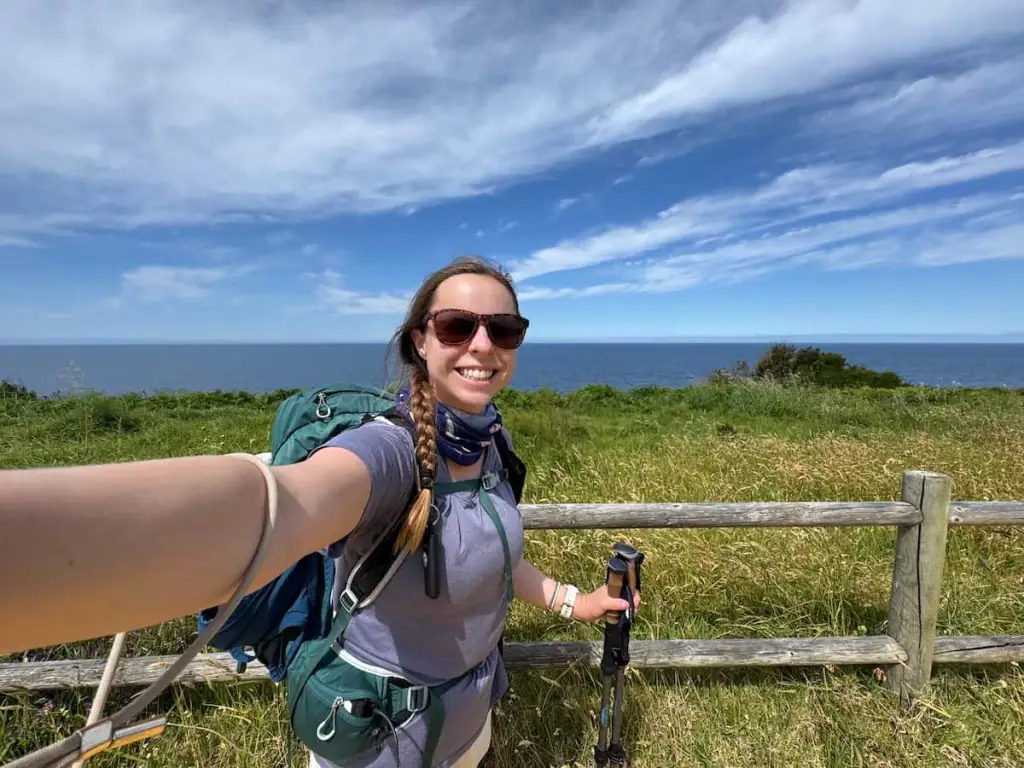How to Prepare for the Camino de Santiago: 7 Steps
How in the world do you prepare for the Camino de Santiago?
Like you, I found myself asking this same question a million times before my first Camino. When you've never done anything like this before and are going solo as a female, it's all the more stressful.
Since then, I've walked three Caminos solo, covering 811 miles (1,305 km) of trail. Now I can confidently say that preparing for this journey doesn't have to be so overwhelming.
That's a huge reason why I started this website–I love the Camino and I want to make it as easy as possible for you to prepare for your own journey. You should be spending this time feeling excited for what's ahead instead of stressed.
So in this article, I've put together a simple guide to help you understand how to prepare for the Camino de Santiago. From planning to packing, training, and more, I've got you covered.

Prepare to Walk the Camino de Santiago in 7 Steps
Getting ready for the Camino de Santiago doesn't need to be overly complicated. In these simple 7 steps, I'll walk you through the key things you need to focus on to prepare.
Step 1: Think About Your “Why” and What You Want to Get Out of the Camino
Before you worry about shoes or backpacks, get clear on your “why.” Because when the blisters hit, when it’s pouring rain, or when you’re starting to feel homesick, your “why” keeps you putting one foot in front of the other.
For me, the Camino wasn’t just something I wanted to do. It was something I felt I had to do.
After my engagement unexpectedly ended, I felt completely lost. The future I had spent years building suddenly vanished. I didn't know where I'd go in life next, but I knew I had to finally walk the Camino and give myself an adventure of a lifetime to start healing.
And that purpose mattered more than I realized. When I was exhausted or questioning why I’d ever thought walking across Spain was a good idea, I came back to my why.

Your reason might be different–maybe you're looking for clarity on what to do next in life, want to see more of Spain, or just want to make friends with people from all over the world.
Whatever that reason is, hold onto it. Write it down. Say it out loud when you need to.
Because the Camino will test you. And when it does, your “why” is what will carry you through.
As you prepare, you'll also want to think about what you want to get out of the experience. Start thinking about that now as that will help to better inform your planning and keep you on track once you hit the trail.
To help with this, check out the Capture Your Camino Journal that has questions intended to help you mentally prepare, record your journey, and then reflect on the experience afterwards.
Get help mentally preparing for your Camino with the
Capture Your Camino Journal
This simple, guided journal helps you prepare, document, and reflect on your Camino in just minutes a day.


Step 2: Choose the Right Camino Route for You
The Camino Francés might be the most popular Camino route, but it’s not the only path.
I walked the Francés for my first Camino because I wanted to meet people and take in all the history from this classic Camino route. I was solo, a little bit nervous, and knew I’d need connection to help me get through any challenging days on the path.
But if you’re looking for something quieter or more coastal, the Portuguese Coastal, Camino Primitivo, or Camino del Norte might be a better fit for you.
My advice? Choose the route that supports your why. Not the one everyone else recommends.
And once you have your route selected, it's a good idea to consider purchasing a guidebook and Camino app so you can start familiarizing yourself with the route.
For more information on the Camino routes, check out my other articles:

Step 3: Budget for Your Walk
One of the best parts about the Camino is that it can be incredibly affordable.
I typically budget around €50 per day, which gives me enough for meals out, lodging in albergues, the occasional private room, and a few glasses of tinto de verano along the way. It wasn’t luxury, but it was exactly what I needed.
Here’s a rough breakdown of what you can expect:
- €5 for breakfast with a pastry and coffee
- €5-10 for a bocadillo for lunch
- €15-20 for dinner
- €10–25 for an albergue bed (municipal albergues will be cheaper and privates will be more expensive)
- €1–3 for Aquarius sports drinks and other snacks
If you're planning to book private rooms or hotels, those will definitely cost more. Depending on what you're looking at, they could cost anywhere from €40-200+.
Of course you'll also need to factor in extra costs like purchasing your gear, flights, transportation to and from your starting points, and other miscellaneous costs.
To get a better sense of costs for private albergues and private rooms or hotels on the Camino, visit Booking.com.

Step 4: Start Training Your Body for the Camino
Here’s what no one tells you: there’s no perfect training plan. Nothing can fully prepare your body for what it's like to walk long hours day after day on the Camino.
However, that doesn't mean you should skip training altogether. While it's absolutely possible to hike a Camino without training if you're a relatively fit person, it will make the trail much more difficult.
Generally I recommend walking as much as you can before you go. Start small with something like 10-15 miles (16-24 km) per week. Over time, slowly ramp up your mileage and introduce your pack so your body gets used to the extra weight too.
Before my first Camino, I spent about a month or two walking anywhere from 30 minutes to two hours most days of the week. I did a couple of longer hikes on weekends in the mountains near my house to help as well.
In hindsight, I wish I had done more to train, but I wasn't very committed to my training then. For the first week or so on the Francés, I really struggled (granted some of that was due to bad shoes).
But I adjusted. I rested. I learned to listen to my body and did what I needed to do to care for it.
Connect with Other Women Hiking the Camino
Join my free Facebook group! We're building up a community of women who have hiked or are planning to hike the Camino there. You can also get personalized support from me!

Step 5: Figure Out Your Camino Packing List and Test Out Your Gear
Figuring out what to pack for the Camino de Santiago is one of the hardest parts of preparing in my opinion. I mean how can you really bring enough for so much time on the trail all while carrying everything?
If it's your first time doing something like this, it can definitely feel overwhelming. But don't worry! After walking three Caminos now, I've put together my packing recommendations that I hope will make this easier for you.
This is not a full packing list, but a high-level, these are the main things you'll generally want to pack:
- 2 walking outfits (you'll be doing laundry often, after all)
- Warm layers (fleece, pants)
- Rain gear (pack cover, jacket, pants)
- Town and shower shoes
- Sleeping bag liner or a sleeping bag
The two most challenging pieces of gear to sort out are your hiking pack and shoes. Definitely give yourself plenty of time to try on a number of different options.
On my first Camino, I made the mistake of only giving myself about a month to try out my shoes. Unfortunately they weren't a great fit, but I ran out of time to try something else. Somehow I naively thought they would work out if I just put some padding in the shoes, but I was miserable.
My feet felt horrible until I got the shoes I now use, which are one of the most popular shoes for the Camino.
After this experience, one of my biggest tips for fellow pilgrims is to give yourself more time than you think to try out your gear!

Step 6: Consider Booking Some Accommodations Now (but Keep Some Flexible)
Generally before you leave I recommend booking your albergues for the night before you start your Camino and the first day or two on trail.
Otherwise, it's nice to give yourself the chance to be spontaneous (and I say this as a very Type A person myself!). You never know who you might meet on the trail or what kinds of experiences you might find out about while you're walking.
That said, I do think it's a good idea to come up with a tentative walk plan for yourself that you can adjust as you go and your plans change.
Before I left for my first Camino on the Francés, I only booked my stay in Saint-Jean-Pied-de-Port and my first night on the trail in Orisson. Everything else? I figured out as I went and ended up staying at some incredible places I never would have otherwise known about.
For my last two Caminos on the Portuguese routes, I did book a few more places in advance as many albergues were smaller and didn't always have room for walk ins. But even then, I only booked a few days before my stay at most.
Walking the Camino Portugués?
➡️ Book My Favorite Place to Stay in Porto Here
Walking the Camino Francés?
➡️ Book My Favorite Place to Stay in Saint-Jean-Pied-de-Port Here

Step 7: Sort Out Remaining Logistics
Of course, there are some generally boring–but essential–logistics you'll want to get sorted before you go:
- Make sure your passport has validity for another 6 months after you arrive in Europe.
- Double check visa and entry requirements so you can make sure you have everything you need to pass through customs easily.
- Get travel health insurance.
- Download an eSim for cellular data abroad–I personally use Airalo as I find it fairly easy to use, and they have a number of affordable plan options.
- Learn a few phrases in the local language. Skip Duolingo–you don't need to learn “The witch likes to go hiking in the woods” (true story). Instead check out apps like Memrise, Babbel, or Language Drops.
- Organize baggage transport for anything you need to send to your next destination or on to Santiago.
- Pick up your pilgrim passport.
- Stay safe by letting someone know about your tentative walking plans.
For more info on baggage transport and getting a pilgrim passport, I have tips in this starting points guide.
I use World Nomads insurance. World Nomads offers coverage for more than 150 adventure activities as well as emergency medical, lost luggage, trip cancellation and more.
➡️ Check Out World Nomads Insurance Here.
As an affiliate, I receive a fee when you get a quote from World Nomads using this link. I do not represent World Nomads. This is information only and not a recommendation to buy travel insurance.

Frequently Asked Questions
Here are some answers to frequently asked questions when it comes to preparing for the Camino de Santiago.
How fit do you need to be to walk the Camino de Santiago?
You need to be fit enough to be able to walk at least 8 miles (13 km) per day for multiple days in a row. While many pilgrims carry their backpacks each day, there is an option to send your pack ahead to your destination if you would like.
Can I walk the Camino without training?
It is absolutely possible to walk the Camino without training if you're a relatively fit person. You might find it more challenging, but it's not impossible.
How many miles a day do you walk on the Camino?
You can choose how long to walk each day on the Camino, so the mileage really varies. Generally though you need to be able to walk at least 8 miles (13 km) per day.
What is the best month to walk the Camino?
June is the best month to walk the Camino in my opinion. It typically has the best weather and isn't quite as crowded as some of the other months. However, anytime from April through September is typically good for walking the Camino.

So, Are You Ready for the Camino?
You'll never feel 100% ready for the Camino. It's normal to feel nervous, especially for your first time.
Even before my second Camino, I find myself lying awake way too late the night before with my mind racing with all of my fears and worries.
But as long as you've properly prepared, once you get out on the trail, those fears and worries usually fizzle out fairly quickly.
And now that you've read through this article on how to prepare for the Camino de Santiago, you're one step closer to getting where you need to be.
What Next? Get My Top Tips for Camino Pilgrims
As you continue preparing, I recommend reading this article next with tips I've put together for pilgrims like you.
Connect With Other Female Pilgrims
Community can be so helpful when it comes to preparing for the Camino. Consider joining my free Facebook group for women. This is a place where you can ask questions and get the support you need so you can start your Camino feeling confident.
